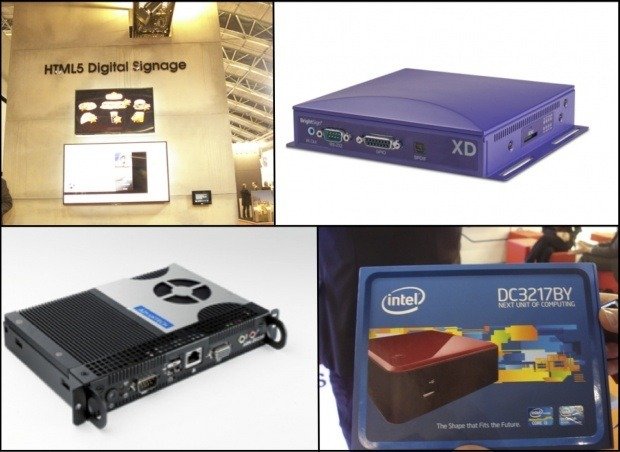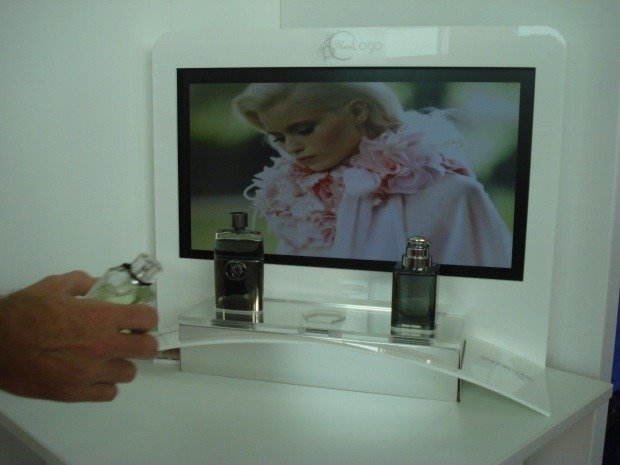
Electronic paper displays are creating new opportunities in indoor applications, such as internal communications
At the end of June, London hosted two large shows relevant to the DOOH industry, doing battle during the same week: European Sign Expo (ESE) and Marketing Week Live.
ESE, held at Excel, was an appendix of FESPA and, as with all appendices, it could be removed without causing any life-threatening harm. The show’s aim was to unite traditional, manufactured signage items with digital signage, showing off displays, media players and everything in between that might be needed to increase adoption, particularly in DOOH. However, it failed to attract many of the big players, leading to criticism before the show had even opened.
The companies in attendance did make a considerable effort to meet these objectives. Inurface Media promised and indeed showed a wide range of displays on a packed stand duly representative of this significant company in the UK supply chain. Display Solutions integrated, well, solutions from partners Intevi and Neo Advertising, while iBase demonstrated 4K displays using Dise software. This latter company also previewed its new S1-64, a four-input DVI signage player, plus an eight-up DVI redundancy system to be launched at next year’s ISE.
WizePanel from Wilke Technology was the star of this show. This is a standalone proposition that uses e-ink screens to display content, networked via a digital radio frequency. It may look like using a monochrome Kindle for signage, but whether it’s for wayfinding, internal communications or product information, the displays are clear and neat. This cable-free system can be attached using Velcro or magnetics, weighing as they do between 0.6 and 1.5kg, and measuring between 1.4 and 19″ (3.6 and 48.2cm).
Managing an installation requires the WizePanel dispatcher, its central station for the radio tags which connect to the IT environment. Supplied with its own software, clients can create different designs and change content dynamically. Jurgen Wilke, chief executive, explains the economics: “The cost will depend on the project, but about €500 (£432) per unit. The life expectancy is between five and 15 years; it carries long-life batteries which last for months. It is an all-round green and economical solution.”
But if you wanted to find more accomplished stands showing DOOH-relevant propositions, Olympia’s Marketing Week Live had the better draw. While pitched to marketeers, the Retail and Live areas contained strong digital signage offerings.
Live was located at the entrance of the event, dedicated to events and exhibitions companies; one of the first exhibits we came across was Alchemy, showing a couple of Christie MicroTiles displays fed with content from Amigo Digital. Channel Interactive was showing its for-hire touchscreen solutions, developed with U-Touch technology. There were videowalls and multi-touch tables which, according to business development director Mark Evans, are proving ‘very popular’ in the events community.
Beaver Group was in the Retail area, showing an impressive nine-by-six videowall composed once again of MicroTiles, enabled for interactivity using a touch-pad located in front. The wall’s 4K content has well deployed to give a truly immersive experience. Incidentally, the presence of Christie’s flagship display format across so many stands tells a tale of an industry that has cash to spend and is intent on providing impactful signage.
One newcomer was AVM Impact, whose product manager David Summer described Marketing Week Live as a ‘very good’ outing for the company – but he preferred to discuss digital media rather than digital signage, per se. “AVM Impact has so far been focused on the corporate market, but digital media encompases many other sectors,” he explains. “For this reason we are developing a new website which will better serve this market.”
Stratacache was showing its full range of products, although if you’ve been to other shows recently you’d already have witnessed this. Dutch developer JamiePro was also aiming to keep it simple; its background is in kiosks and was launching a new mini-kiosk with touchscreen and print facilities at Olympia, making it ideal for table-top applications. Also on offer were screens ranging from 17 to 80″ (43.2 to 203.2cm). Signbox, meanwhile, offers printed light-boxes that look very much like digital screens, complete with QR codes and smartphone interactivity, showing that, as we often debate at Output, digital signage’s next frontier is almost certainly mobile.
ESE is the successor to Screenmedia Expo, and the approach was the same: showing digital screens as a medium. Displays and players may be key components in the digital signage puzzle, but this is no longer enough. DOOH needs context and content – so it’s easier to see why Marketing Week Live was more of a success.

